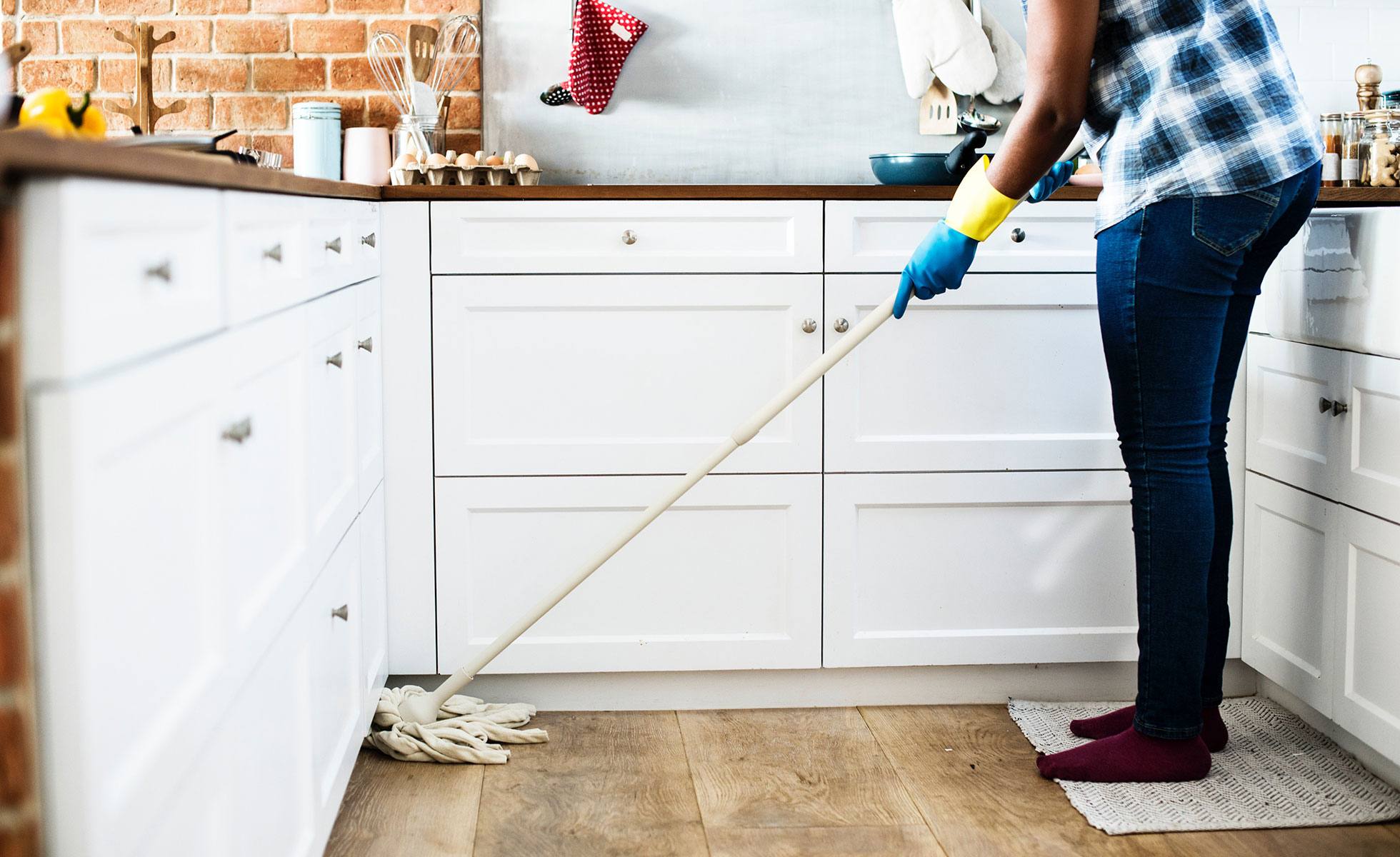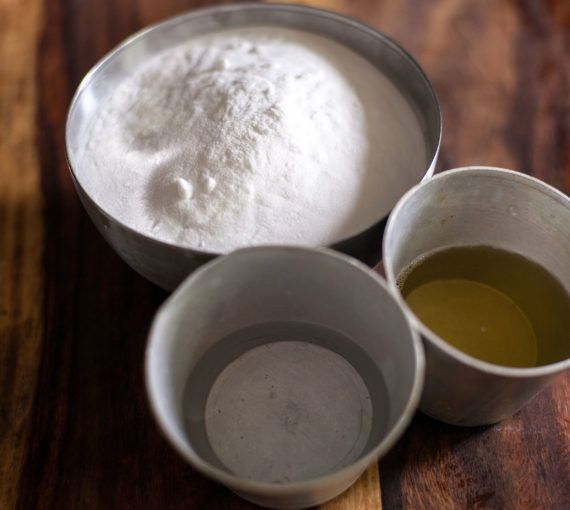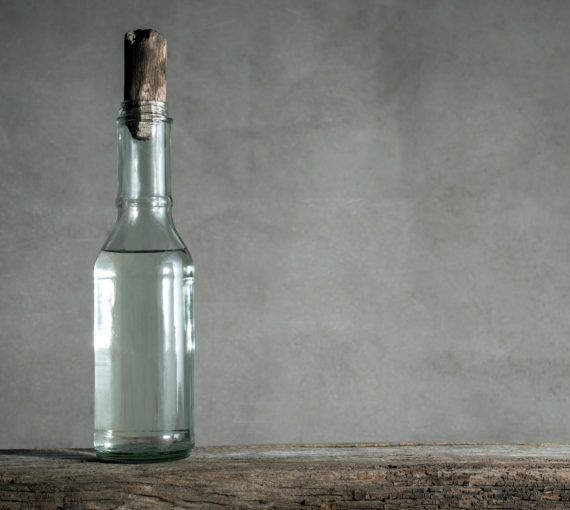
Most of us are exposed to cleaning products and their residues every day. (Photo: rawpixel via Unsplash)
Walk down any cleaning aisle and you’ll see shelves of products promising to kill germs, cut grease and leave surfaces sparkling. But many conventional cleaners contain chemicals that can harm your health and the environment.
Learn how to read between the labels, spot greenwashing and take control of what you bring into your home.
The not-so-squeaky-clean truth about conventional cleaners
Though most of us are exposed to cleaning products and their residues every day, we have no idea what’s in them. Why? Canada doesn’t demand warnings about long-term health and environmental hazards from chemicals in cleaning products. And manufacturers aren’t required to list ingredients. Some disclose them, but information can be vague and misleading.
Some contain harmful chemicals linked to cancer, reproductive disorders, asthma and severe allergies. Symbols, such as the skull and crossbones, warn about acute hazards. Labels include words such as “poison,” “corrosive” or “irritant.”

Did you know?
In 2012, some 10,500 David Suzuki Foundation supporters took our home cleaners survey. They entered information on labels for more than 15,000 products! But only 42 per cent had a full list of ingredients. And many lists were confusing.
Cleaning product ingredients to avoid
Some products are more harmful than helpful. Get familiar with what’s harmful in the cleaning aisle to know what to avoid and what to examine further.
- Scented cleaners. Often contain undisclosed synthetic fragrances or “parfum.” These can trigger allergies and asthma.
- Antibacterial cleaners. Often contain triclosan, a suspected endocrine disrupter harmful to aquatic ecosystems. Instead, make your own germ-fighting products.
- Coloured cleaners. Often contain synthetic dyes derived from petrochemicals. These can contain heavy metals like arsenic, cadmium and lead which can cause nervous system damage, cancer and other serious health effects.
What to look for on home cleaner labels
Cleaning products are notorious for greenwashing. Make informed choices. Learn the significance of credible ecolabels and how to spot non-regulated terms.
Trusted ecolabels found on cleaning products
Ecolabels are words or symbols that show products meet certain environmental or ethical standards. They’re usually on external packaging or the product container.
Keep in mind: Smaller businesses with strong sustainability practices may not be certified due to cost or capacity. In these cases, look for other indicators like a complete, transparent and clean ingredient list.
Trusted ecolabels to look for on cleaning products:
- B Corp. Certified B Corporation brands and companies uphold rigorous standards of social and environmental performance, accountability and transparency. Areas covered include employee benefits, charitable giving, supply chain practices and materials sourcing.
- EcoCert. This independent body sets and oversees its own standards for organic and environmentally friendly products. It uses binding contracts, audits and reviews to maintain its reputation as a trusted label for socially responsible, sustainable, organic and fair trade brands. EcoCert administers and oversees more than 150 ecolabels worldwide.
- ECOLOGO. Certified products are independently verified to have a lower impact on the environment and human health. These certifications are voluntary and based on multiple environmental factors across the product’s life cycle.
- EWG Verified. These cleaning products meet the Environmental Working Group’s strictest standards for consumer health and transparency.
- Green Seal. One of the world’s most trusted ecolabels for cleaning products and services. Certified products meet their standards for performance, safety and health.
- Leaping Bunny. Verifies the company has no animal testing practices in all stages of product development. Ingredient suppliers have also committed to being 100 per cent free from animal testing.
- Safer Choice. Guarantees the product was made with the safest possible chemical ingredients under the program’s rigorous criteria for health and environmental safety. Governed by the United States Environmental Protection Agency. Imported cleaning products are sold in Canada with this label.
Terms to watch on cleaning product labels
Buzzwords like “natural,” “green” or “eco-friendly” adorn many conventional cleaning products. These terms aren’t regulated in Canada and can be used freely without third-party verification. It’s a common greenwashing techniques used in labelling and advertising to intentionally mislead consumers into believing products are environmentally responsible when they may not be.

Buy bulk cleaning supplies and refill!
Aspiring to adopt a low-waste lifestyle and recycle less? Many bulk and refill stores sell eco-friendly cleaning products. You can buy larger quantities, reducing the need to repurchase often.
If you’re a beginner to bulk and refill or want a refresher…
Commonly used non-regulated terms and claims on cleaning product labels
If your product has no eco-certification, doesn’t list ingredients or uses misleading imagery (e.g., illustrations or symbols of nature), inspect the packaging and product for commonly used non-regulated terms.
Non-regulated terms to watch on cleaning products:
- Green. Implies that the product is environmentally friendly or made with sustainable practices. The reality? It’s a broad, non-regulated term that can be used without clear standards.
- Baby-safe. Implies the product is gentle and safe for use around babies and small children. The reality? There are no specific standards to define what makes a product “baby-safe.” Products may contain ingredients harmful if ingested or contact sensitive skin. Check ingredients carefully.
- Biodegradable. Implies the product or packaging will break down naturally and safely in the environment. The reality? There are no strict regulations for what qualifies as “biodegradable” in cleaning products. Many substances labelled “biodegradable” only break down under specific conditions, such as in industrial composting facilities. Check for official biodegradability designation (e.g., biodegradable test OECD 301 D or E).
- Dye-free. Implies the product doesn’t contain added synthetic dyes. The reality? The term isn’t regulated and generally used to appeal to consumers concerned about artificial colours. It’s usually an accurate claim. But it doesn’t guarantee the product is free from other potentially harmful substances.
- Natural. Implies the product contains ingredients derived from plants, minerals or animals. The reality? There’s no official standard for “natural” in cleaning products. A product labelled “natural” may contain synthetic ingredients. Or it may be minimally derived from natural sources.
- Non-toxic. Implies the product is free from harmful or toxic chemicals. The reality? There are no clear, shared definitions of what “non-toxic” means in cleaning products in Canada. Products can still contain chemicals that may be harmful in certain quantities or over long-term exposure. There’s no standardized testing for this claim. The best way to avoid toxic chemicals? Make your own cleaning products.
- Plant-based. Suggests that the product’s active ingredients are derived from plants rather than synthetic chemicals. The reality? “Plant-based” can be used loosely. While some of the products may use plant-based ingredients, they may still contain synthetic chemicals or preservatives. The overall environmental impact may not be significantly different from conventional products.
- Vegan. Implies that the product does not contain any animal-derived ingredients. The reality? Like “cruelty-free,” “vegan” is not regulated in cleaning products. A product labelled “vegan” may be tested on animals.

Tip!
Several apps and web resources can help you make informed decisions when shopping for cleaning products (and body care, cosmetics, etc.). Many allow you to search for or scan the product barcode to see which ingredients are a concern to the environment and human health.
The best solution? Make your own green cleaners!
Homemade cleaners are simple, affordable and effective. The best part? You know exactly what’s in them!
You can use basic ingredients like vinegar, baking soda and lemon to whip up everything from glass cleaner to laundry soap.
You’ll reduce packaging, avoid toxic chemicals and save money — all while keeping your home fresh and safe.



